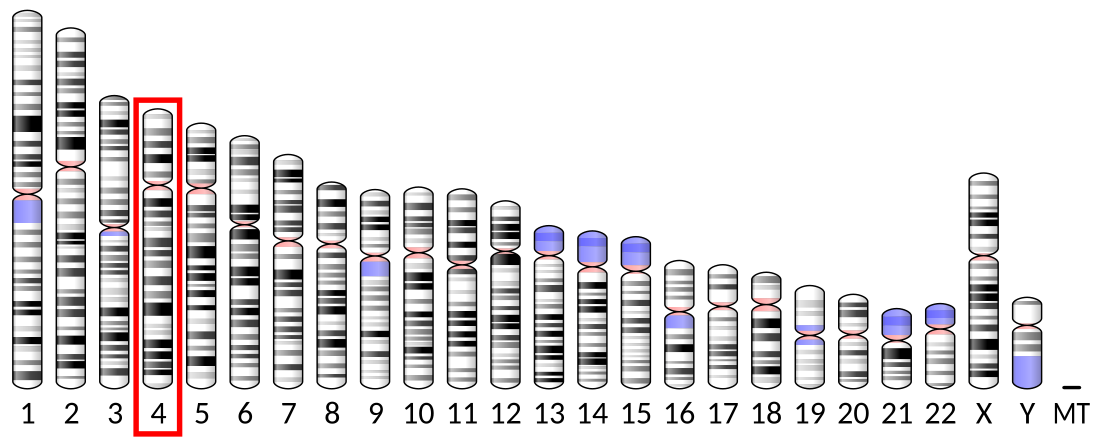Top Qs
Timeline
Chat
Perspective
GSX2
From Wikipedia, the free encyclopedia
Remove ads
GS homeobox 2 (GSX2) is a protein encoded by a gene of the same name, located on chromosome 4 in humans,[5] and on chromosome 5 in mice.[6]
It is especially important to regulating the development of the brain, particularly during embryonic development.[7] Mutations have been linked to a variety of neurological disorders that can cause intellectual disability, dystonia (difficulty with movement) and seizures.[8]
Remove ads
Structure
GSX2 is a polypeptide chain consisting of 304 amino acids, with a molecular weight of 32,031.[9]
Function
GSX2 is a homeobox transcription factor essential for mammalian forebrain development, particularly in specifying and patterning the basal ganglia.[10][7] It binds specific DNA sequences, crucial for dorsal-ventral patterning of the telencephalon and specifying neural progenitors in the ventral forebrain.[11][12]
GSX2 acts within a temporal framework, initially guiding the specification of striatal projection neurons during early lateral ganglionic eminence (LGE) neurogenesis, and later supporting olfactory bulb interneuron development.[13] Mutations in GSX2 have been linked to basal ganglia dysgenesis in humans, resulting in severe neurological symptoms, including dystonia and intellectual impairment.[10]
GSX2 is highly expressed in neural progenitors within the ganglionic eminences, precursors to the basal ganglia and olfactory structures. It promotes neurogenesis while inhibiting differentiation into oligodendrocytes, a type of glial cell in the central nervous system.[7]
Remove ads
Clinical significance
Neurodevelopmental disorders
Mutations in GSX2 have been linked to severe neurodevelopmental disorders characterized by specific brain malformations. This includes cases of basal ganglia agenesis, leading to symptoms such as a slowly progressive decline in neurologic function, dystonia, and intellectual impairment.[8]
Diencephalic-mesencephalic junction dysplasia syndrome
A single nucleotide polymorphism and missense mutation in GSX2, rs1578004339, has been found to be a pathogenic cause of diencephalic-mesencephalic junction dysplasia syndrome, a neurodevelopmental disorder characterised by severe intellectual disability and seizures.[8]
References
Wikiwand - on
Seamless Wikipedia browsing. On steroids.
Remove ads




